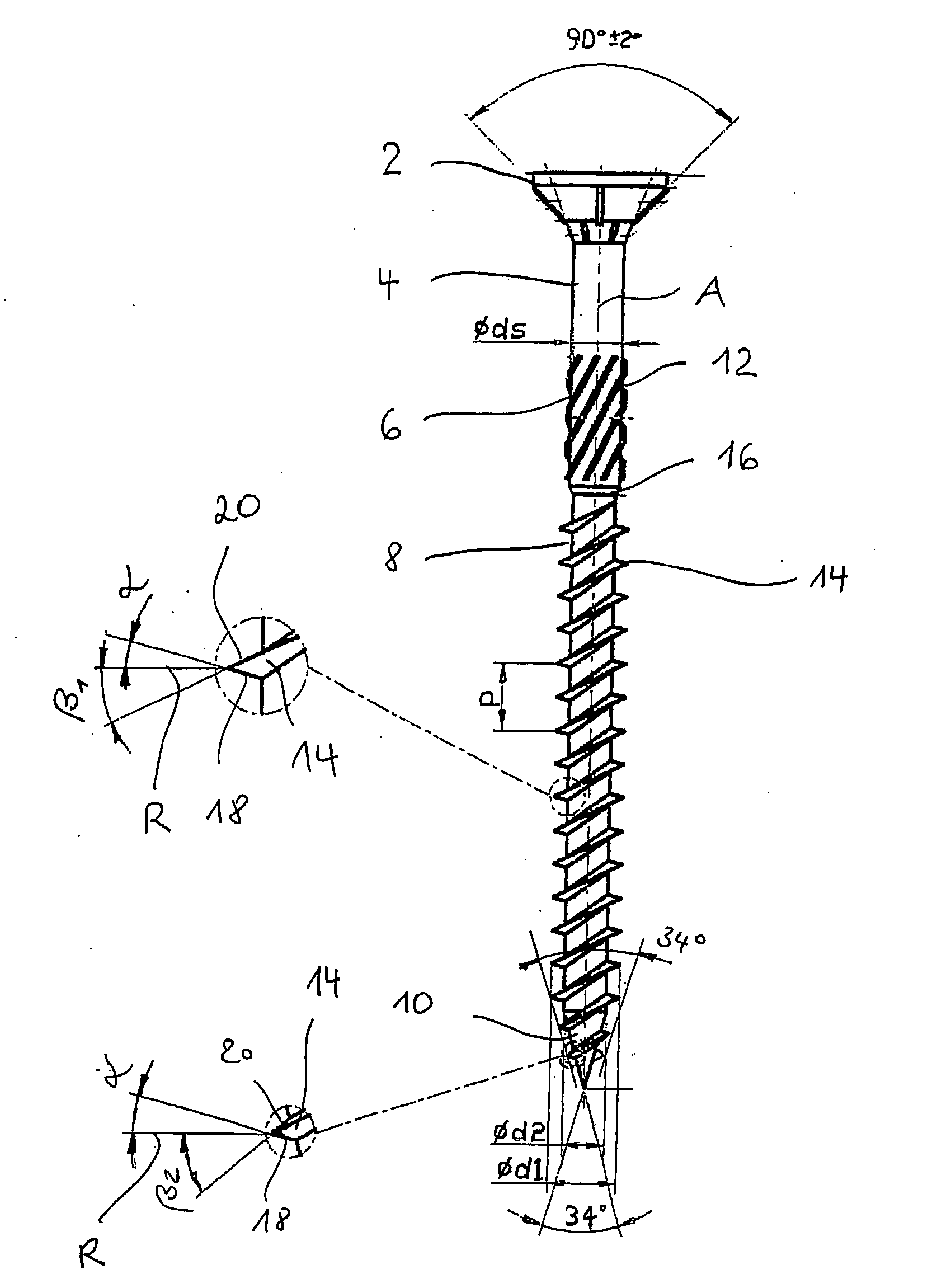Wood and Plastic Screw
a technology of plastic screw and wood, which is applied in the direction of screws, nuts, bolts, etc., can solve the problems of inability to produce flank angles and inability to produce exact angles, etc., and achieve the effects of less manufacturing complexity, increased displacement, and relatively simple manufacturing
- Summary
- Abstract
- Description
- Claims
- Application Information
AI Technical Summary
Benefits of technology
Problems solved by technology
Method used
Image
Examples
Embodiment Construction
[0016] The screw shown in FIG. 1 for screwing in solid wood, chipboards, dowels etc. is made of metal and has a head 2, a shank which is to be divided up essentially in three regions 4, 6 and 8, and a tip region 10. The region 4 of the shank is configured cylindrically and has neither a thread nor other projections. The adjoining shank region 6 is provided with milling ribs 12. Regions 4 and 6 of the shank have the same diameter ds, (in the region 6, this diameter ds, is a core diameter). A two-start thread 14, which has a pitch p and extends as far as into the tip region 10, has a starting point in the region 8. Here, the core diameter d2 is smaller than the diameter ds such that the regions 8 and 6 are separated from each other by a shoulder 16.
[0017] The thread 14 has a tip-side lower flank 18 and a head-side upper flank 20. A tip-side flank angle α in the region 8 of the shank is approximately as large as that in the tip region 10, and is approximately 15°. The tip-side flank a...
PUM
| Property | Measurement | Unit |
|---|---|---|
| flank angle | aaaaa | aaaaa |
| angle | aaaaa | aaaaa |
| flank angle | aaaaa | aaaaa |
Abstract
Description
Claims
Application Information
 Login to View More
Login to View More - R&D
- Intellectual Property
- Life Sciences
- Materials
- Tech Scout
- Unparalleled Data Quality
- Higher Quality Content
- 60% Fewer Hallucinations
Browse by: Latest US Patents, China's latest patents, Technical Efficacy Thesaurus, Application Domain, Technology Topic, Popular Technical Reports.
© 2025 PatSnap. All rights reserved.Legal|Privacy policy|Modern Slavery Act Transparency Statement|Sitemap|About US| Contact US: help@patsnap.com


